The newly completed production facility in Rovaniemi, which was finished in August 2022, is not only a significant investment for the company but also unique in terms of energy efficiency and environmental friendliness.
The LEED certification is a globally recognized and highly regarded environmental classification system for buildings. It assesses various factors such as energy efficiency, environmental friendliness, and user experience. There are different levels of LEED recognition, with gold being the second-highest rating a building can receive.
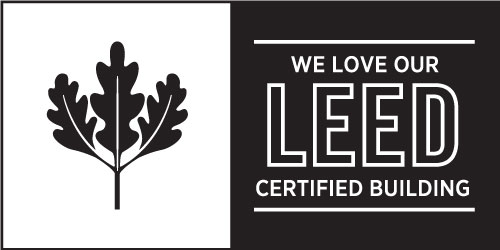
Sustainable choices from draft to daily operations - Norrhydro aims to set new standards for sustainability
The environmental impact and carbon footprint of the new production facility have been carefully considered throughout the entire construction process from the initial planning stage to each phase of construction, including material selection and construction waste management. The location of the facility was carefully selected, criteria being e.g. necessary distance to preservable nature and residential areas.
Norrhydro has focused on implementing sustainable practices that minimize waste, emissions, and soil impacts associated with the production process. Furthermore, Norrhydro is committed to using energy, water, and other resources as efficiently and responsibly as possible. The company has implemented energy-efficient systems and technologies throughout the facility, ensuring optimized energy usage, and minimized waste. By making responsible choices and utilizing resources efficiently, Norrhydro has already reduced the production’s CO2 emissions by an impressive 20% compared to the production in the old factory.
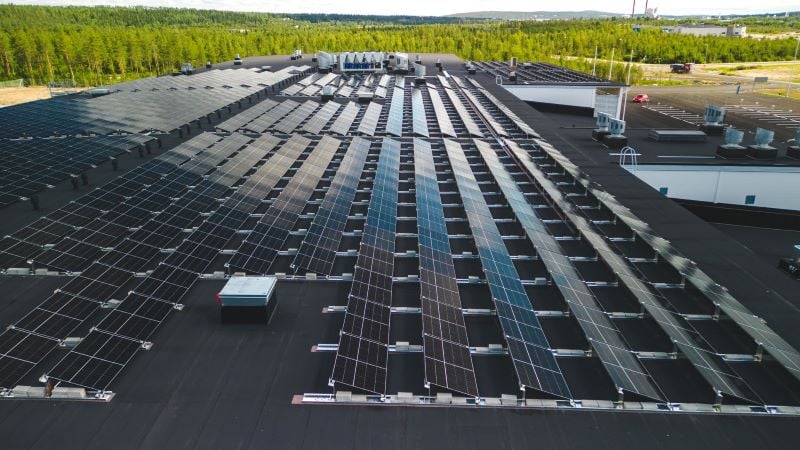
Energy efficiency and water usage, the primary criteria for LEED certification
The choice of energy source for the property plays an important role in evaluating LEED certification. When designing Norrhydro's new production facility, special attention was given to overall energy production and energy recovery. A part of the energy needed by the production is generated through solar power, with 1000 solar panels installed on the facility's roof.
Furthermore, the waste heat generated by the production processes is utilized in the local district heating network. The waste heat is captured from the factory's cooling water circulation. Additionally, heat recovery systems that extract heat from the outdoor air have been installed on the building's roof, enabling increased heat production for the district heating network. The same system also provides hot heating water for the factory's paint shop during the summer months. The utilization of the district heating network allows the use of various energy sources in the future as well as the expansion of energy production.
The intelligent building automation system provides energy-efficient management of the facility's essential technical operations such as heating, lighting and ventilation, all connected to an alarm system for continuous monitoring. The building automation for example enables easy scheduling of technical systems shut down, such as lighting and ventilation control when the building is unoccupied. The facility's water consumption is actively monitored, and process water has continuous volume measurement which enables immediate action if the set limits are exceeded. The devices have been selected especially considering low water consumption.
Committed to ensuring a safe working environment for its employees
Norrhydro places great importance on creating a safe and comfortable working environment. Investments that contribute to the well-being of the employees include measures related to indoor air quality and lighting. Significant attention has been given to ensuring clean breathing air, for instance, through the automation of oil mist separators, and welding gas and dust extraction systems installed on the machining workstations.
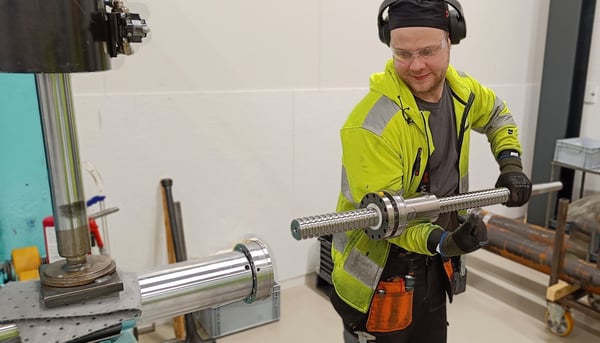
LEED certification also evaluates whether the building is accessible by public transport and what measures have been taken to enable commute cycling. To promote a healthy environment for the employees and the surrounding community, Norrhydro actively supports commute cycling by providing facilities for showering and changing clothes, as well as reserving sheltered bicycle parking.
The environmental safety of the building is essential
With a strong commitment to ecological responsibility, the company has implemented various measures to safeguard the building and minimize potential risks. One notable feature is the inclusion of oil overflow tanks equipped with an advanced alarm system to detect any potential accidents. The tanks provide an additional layer of protection, ensuring that in the event of an overflow, the situation can be swiftly addressed and mitigated. Furthermore, the facility's floor drains are equipped with oil separators, which are continuously monitored and measured to prevent oil contamination from entering the environment.
In line with Norrhydro's commitment to waste reduction and recycling, the company strives to recycle as much of the production waste as possible, achieving a recycling rate of nearly 90%. By implementing efficient waste management practices, Norrhydro ensures that any waste generated is properly sorted and disposed of, minimizing its impact on the environment.
Overall, Norrhydro's dedication to environmental responsibility goes beyond simply achieving LEED certification. The company's comprehensive approach to sustainability is to offer environmentally friendly products to its customers, to preserve and respect the environment in its own operations, and to support the employment and vitality of Northern Finland.
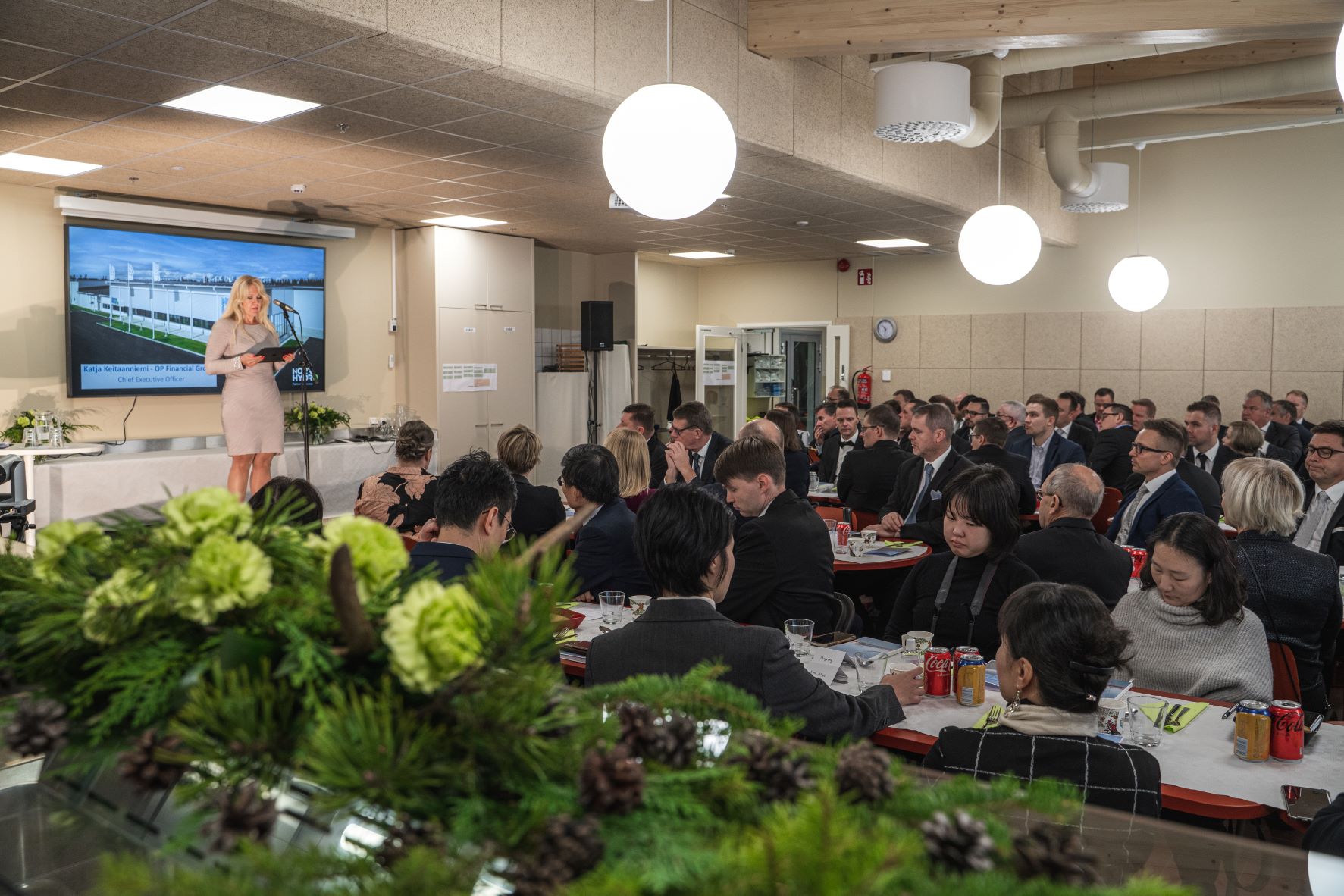
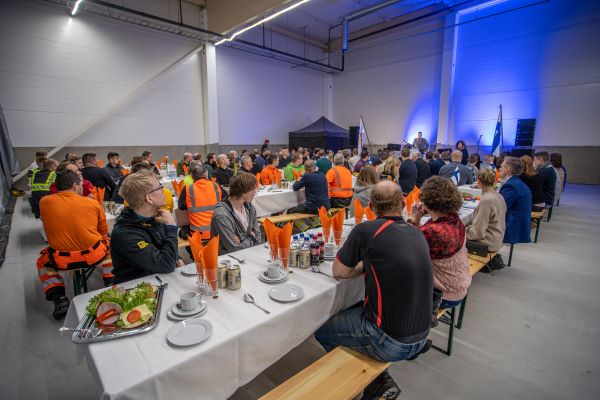

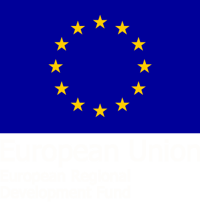


SUBMIT YOUR COMMENT